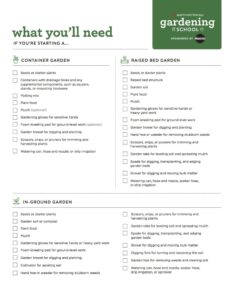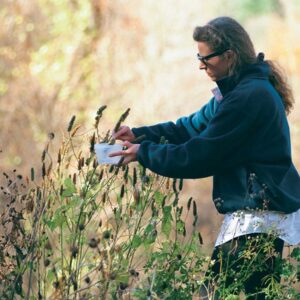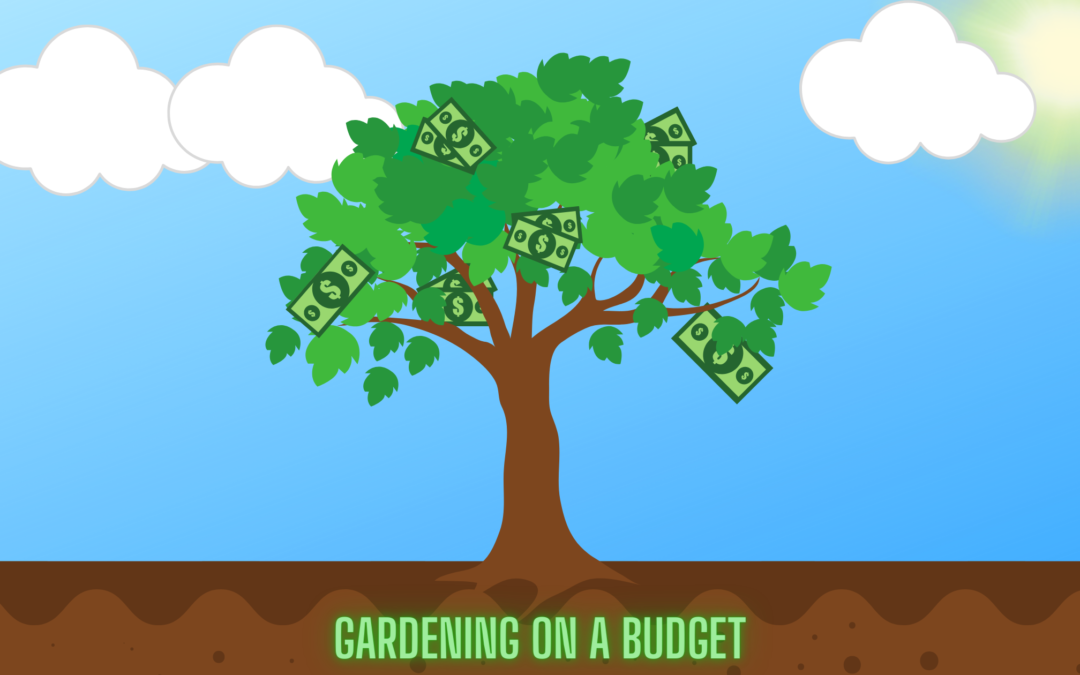Author: Reva Grewal
Editor: Rayna Almas
Graphic Designer: Alessia Carpino
Publisher: Jumana Ismail
Upon perusing the multitude of blog posts in regards to gardening, you may have had the inquiry: “I want to tend to a personal garden, but I do not want to break the bank whilst doing it”. You have arrived at the right location that will provide an answer to your inquiry. Throughout this post, a couple of suggestions to save money while gardening will be provided. These suggestions will cover areas such as organization, stock, and where to find additional free advice if needed. I believe that gardening is for everyone, and countless studies and research prove that fact, as gardening provides many benefits. I sincerely hope that after reading this post you may feel inspired to start the garden of your dreams, no matter what your budget is! Remember to take a look at some additional links I have provided below if further guidance is needed. *
The first suggestion that may prove helpful to a prospective gardener is a simple one: creating a list (Rogers, 2018)! When grocery shopping many create a list, and that same principle can be applied to gardening. It is proven that creating a grocery list helps with concentrated shopping, thereby saving money and promoting health (Dubowitz et al, 2015). In terms of gardening, a list should be utilized to note garden tools/resources you currently possess. From there, you can determine what you need from what you have. When going shopping, use that supply list to shop. It may appear simple, but purchasing only what is on your list allows you to stay on track and avoid being tempted by that dazzling spade or the off-season flower seeds. The Business Insider also seconds the list-creation motion, so make sure to take time out of your day to brainstorm a comprehensive list (Martin, 2016). To determine what your list should consist of, I recommend centring your garden around what is in season. If you are a complete beginner looking for an all-around guide on how to plan a garden, this article is a must-read: https://seeds.ca/schoolfoodgardens/planning-a-garden/. Along this vein, while taking stock I recommend perusing local flyers/publications to see what is on sale. You may be surprised by what you find (including coupons)!
 Sample Gardening List (Ly, 2019)
Sample Gardening List (Ly, 2019)
The second suggestion provided pertains to seeds/starters (starters are essentially juvenile plants). It is more cost-effective to buy seeds rather than starters (Barth, 2018). Seeds can come in the bulk of up to 700 seeds on some occasions, whereas starters do not. This opens up the opportunity to trade seeds with friends or have backup seeds if you are a first-time gardener experimenting with differing composts, soils, environments, etc (Pokorny, 2020). Within the vein of seed purchasing, there are even more ways to save money. Buy seeds locally to avoid paying shipping costs, and to be able to view the seeds in person, which helps to review the quality and viability of the seeds. Continuing, local seed companies sell quality seeds. You can view local seed companies near you through the Seeds of Diversity’s Canadian Catalogue Index, as linked here: https://seeds.ca/sw8/web/diversity/seed-catalogue-index.
If you still wish to purchase seeds online, be prepared to wait to circumvent erroneous shipping costs (Erica, 2012). At the end of the growing season, make sure to collect any seeds that your plants produce so you may be able to avoid seed costs altogether at the end of your first growing season (Pokorny, 2020). If you would like to learn more about collecting seeds from plants, the following link should be helpful. https://www.finegardening.com/article/collecting-and-storing-seeds.

Someone showcasing a method of harvesting flower seeds (Roth, n.d)
Lastly, joining a community garden helps to save money. Waterloo School Regional Food Gardens is a School Food Garden program. However, there are also community gardens that are available to absolutely anyone in the community, not just students. The following link describes how to join a community garden in the Waterloo Region specifically: https://sites.google.com/view/community-gardens-ca/gardens/how-to-join-a-garden?authuser=0.
So how does joining a community garden save money? Firstly, the allocation of land and space is cheaper and does not rely on the resources you have. You do not need to buy additional soil or planters if you do not wish to. Secondly, other gardeners may be able to provide free knowledge and insight, especially if they are more experienced. For tools, you can even plan to split costs with your fellow gardeners and share tools (Jensen, 2021). Although, during COVID-19 (when this article was written) this option may not be as viable. Some community gardens will charge you for a plot spot and others will not, but most plots are affordable (https://sites.google.com/view/community-gardens-ca/gardens/garden-directory?authuser=0). Overall, community gardens are great as they help you garden on a strict budget.
To conclude, there are many ways to garden while on a budget. The examples included in this article were: buying seeds (not starters), creating a list and taking stock of current resources, and joining a community garden. There are many more ways to save money, and I will link some more extensive lists below. If you’ve been putting off starting a garden because of financial concerns, I hope this article inspires you to do so!
*Waterloo Region School Food Gardens is not affiliated with any of the organizations mentioned throughout this article
Comprehensive lists:
https://www.everythingzoomer.com/money/2018/04/23/tips-for-gardening-on-a-budget/
https://modernfarmer.com/2016/02/gardening-ideas-on-a-budget/
https://blog.cheapism.com/home-gardening-tips-17060/#slide=5
Sources
Barth, B. (2018, October 18). 10 smart ways to garden on a budget. https://modernfarmer.com/2016/02/gardening-ideas-on-a-budget/.
Dubowitz, T., Cohen, D. A., Huang, C. Y., Beckman, R. A., & Collins, R. L. (2015). Using a grocery list is associated with a healthier diet and lower bmi among very high-risk adults. Journal of Nutrition Education and Behavior, 47(3). https://doi.org/10.1016/j.jneb.2015.01.005
Erica. (2012, March 5). 7 ways to save money on seeds – without saving seeds. Northwest Edible Life. http://nwedible.com/7-ways-to-save-money-on-seeds/.
Jensen, D. (2021, April 5). 22 tips to KEEP Gardening dirt cheap. Cheapism. https://blog.cheapism.com/home-gardening-tips-17060/.
Ly, L. (2019). The Official Gardening School Checklist. Apartment Therapy. Apartment Therapy LLC. https://www.apartmenttherapy.com/gardening-school-shopping-list-228842.
Martin, E. (2016, October 21). I saved 50% of my income for a month – Here’s my best tip for saving money. Business Insider. https://www.businessinsider.com/easy-tip-save-money-shopping-list-2016-10.
Pokorny, K. (2020, February 3). 10 ways to save money on your GARDENING BUDGET. OregonLive. https://www.oregonlive.com/hg/2020/02/save-some-bucks-by-gardening-frugally.html.
Rogers, E. (2018, April 23). 15 tips for gardening on a budget. Everything Zoomer. https://www.everythingzoomer.com/money/2018/04/23/tips-for-gardening-on-a-budget/.
Roth, S. (n.d.). Collecting and Storing Seeds. fineGardening. https://www.finegardening.com/article/collecting-and-storing-seeds.

